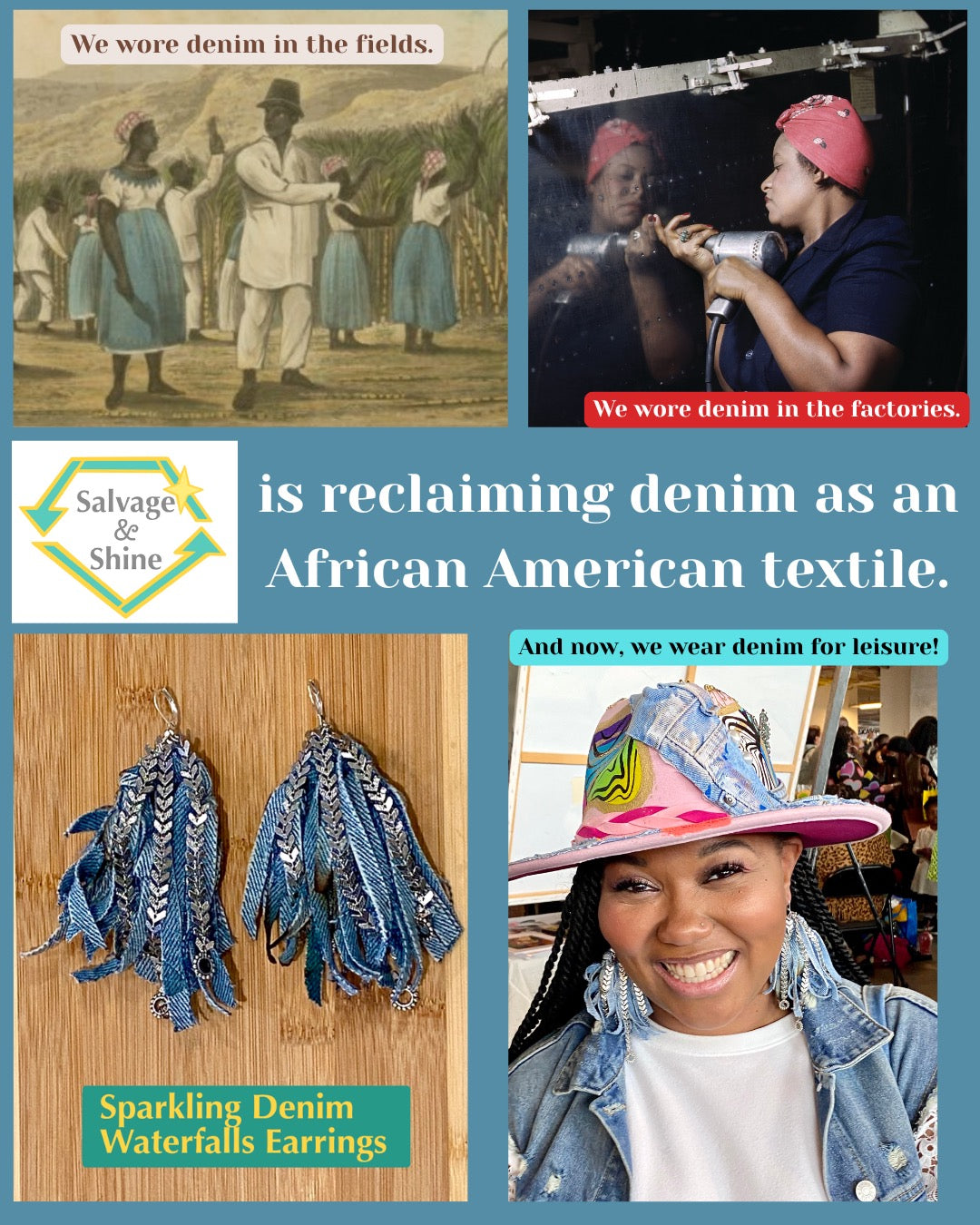
Reclaiming Denim as an African American textile: My 2025 Creative Collaboration
Due to the cultural whitewashing that occurred when historians attempted to sanitize the "peculiar" institution of American slavery, we were misled into believing that jean and denim were American fibers that were created and popularized by a White man with an ethnic last name that rhymes with word "blouse."
However, the truth is that denim is not an American fiber (its multicultural) and its indigo color dying process was actually an African process. White plantation owners wove crude denim cloth to make work uniforms for enslaved African Americans. The fabric was "ideal" for this peculiar institution because it was durable, more breathable, lighter weight, and was cheaper than wool (its contemporary work fabric). It was also cheaper than cotton to manufacture. Also, enslaved Africans never needed training because they had developed textile manufacturing and dying fabrics indigo blue in Africa and were expected to continue manufacturing it in the America plantation system.

As America grew its working class population, denim uniforms were also worn by trades men and women of all racial backgrounds and skin tones. It was worn by Black cowboys and cowgirls and by White cattlemen and cattlewomen.


During World War II, when women left home to become "Rosies" and work in American factories building warcraft, she dressed in denim pants or coveralls with the iconic bandana to cover her hair.

But, today, this African American work fabric is chic and classic Americana! It has transcended from a shoddy work fiber for the enslaved to the ultimate fashion favorite!

In this creative collaboration, I worked with a local Afro-Caribbean denim fiber artist (my Sistren, Ms. Pauline Saunders dba Evadneyline) to create one limited edition eco-fabulous denim earring design which is sold exclusively through Salvage & Shine's purposeful pop up shops. Creating these pieces was a divine moment where I had the power and ability to reclaim a fabric that was originally meant to oppress my enslaved African ancestors and took that same fiber to redeem and create it into these eco-conscious couture wearable art pieces!
Creating eco-conscious wearable art has taught me so much about life. In the case of denim, it has taught me the importance of understanding historical traumas and learning how to grow past them in order to reclaim my self worth by better understanding my cultural heritage and its impact in our world.
More information on the history of denim:
The Origins of Denim in American Slavery
video link: https://youtu.be/Y-ZmNao5wR8
A Short History of the Colour Indigo | National Gallery
video link: https://youtu.be/sDQ6p9M9gdU
Where Did Blue Jeans Begin? | Riveted: The History of Jeans | American Experience | PBS
trailer video link: https://youtu.be/oqicS22qVJ0
###
